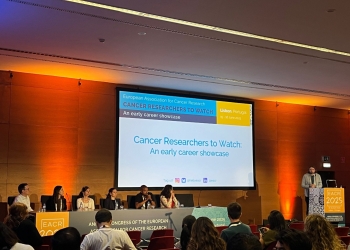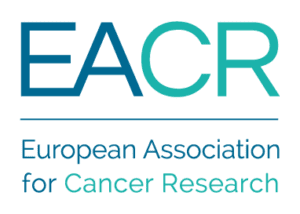The EACR’s ‘Highlights in Cancer Research’ is a regular summary of the most interesting and impactful recent papers in cancer research, curated by the Board of the European Association for Cancer Research (EACR).
The list below appears in no particular order, and the summary information has been provided by the authors unless otherwise indicated.
Use the dropdown menu or ‘Previous’ and ‘Next’ buttons to navigate the list.
6. Two distinct epithelial-to-mesenchymal transition programs control invasion and inflammation in segregated tumor cell populations
Youssef, K.K. et al. Nature Cancer. 5: 1660–1680 (2024).
doi: 10.1038/s43018-024-00839-5.
Summary and graphical abstract by Alexandra Boitor, EACR Scientific Officer
 Summary of the findings
Summary of the findings
Epithelial plasticity is known to play a crucial role in cancer progression, but it is also involved in other pathological processes, such as fibrosis and in physiological processes, such as embryonic cell migration and tissue repair. In all these contexts, epithelial plasticity is triggered by epithelial to mesenchymal transition (EMT). In this paper, Youssef et al. investigate EMT in pathological and physiological models and defined two different EMT programmes: an embryonic-like EMT programme and an adult-like EMT programme consistent with wound healing behaviour.
.
Youssef et al. confirm through their experiments that SNAIL1 pioneers EMT induction, being involved in the activation of early mesenchymal genes, and the recruitment of other transcription factors required for EMT progression enhancing the regulation of various epithelial and mesenchymal markers. The authors show that following SNAIL1 activation, PRRX1 is needed for cells to progress from partial EMT to an invasive phenotype through focal adhesion kinase (FAK) signalling (embryonic-like EMT). Following SNAIL1 activation and in the absence of PRRX1 signalling, cells seem to activate a stable, partial EMT with residual cell-cell junctions characterised by dedifferentiation, inflammation and failure to invade (adult-like EMT; wound healing behaviour). Further experiments confirmed that both EMT programmes are hijacked during tumour progression: cells exhibiting characteristics of both EMT programmes can be found within the same tumour (breast cancer) with the inflammatory (partial) EMT cells distributed through the tumour and the invasive EMT cells localised towards the edges of the tumour.
.
6. Two distinct epithelial-to-mesenchymal transition programs control invasion and inflammation in segregated tumor cell populations
 Summary of the findings
Summary of the findings









